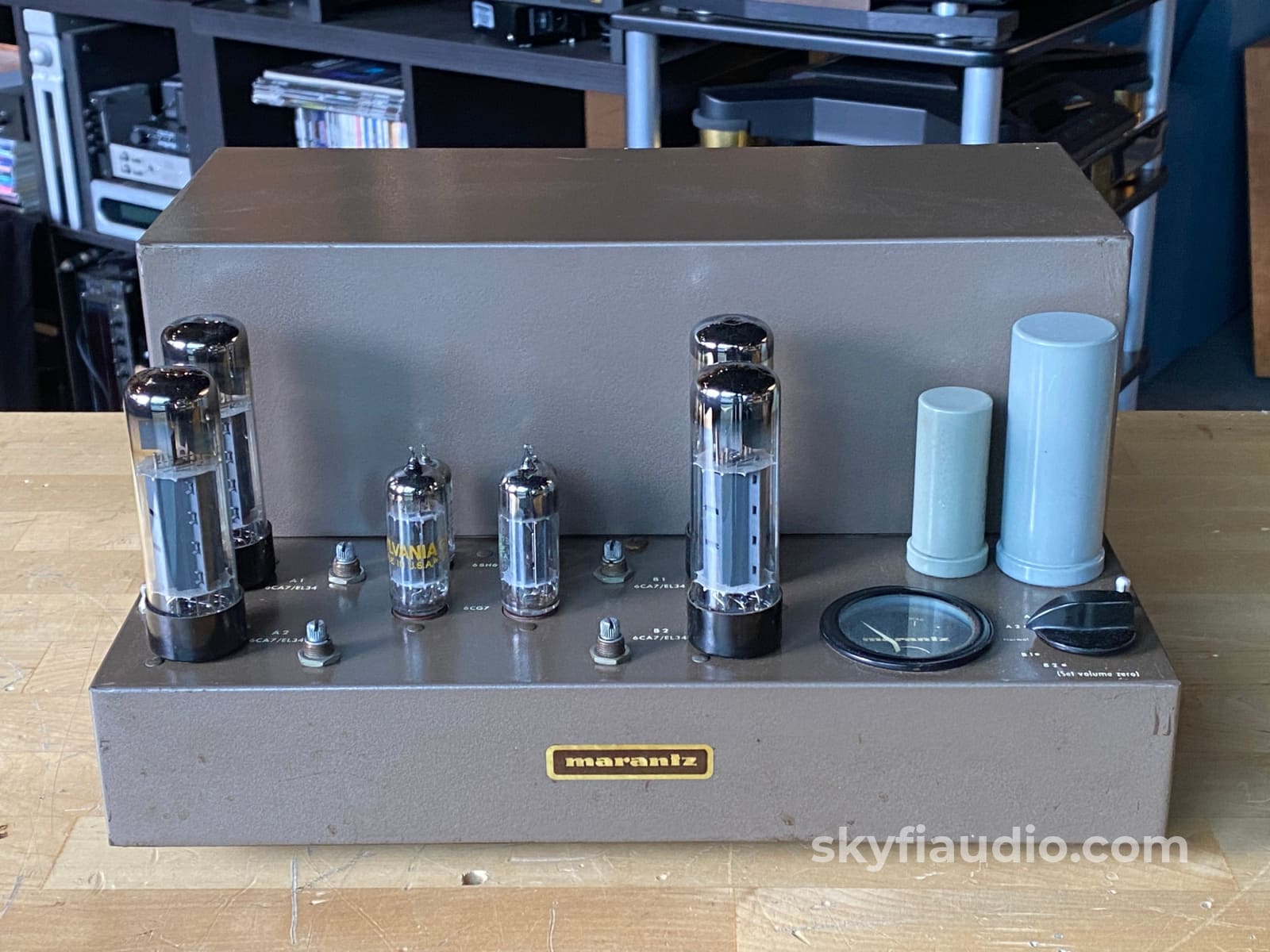
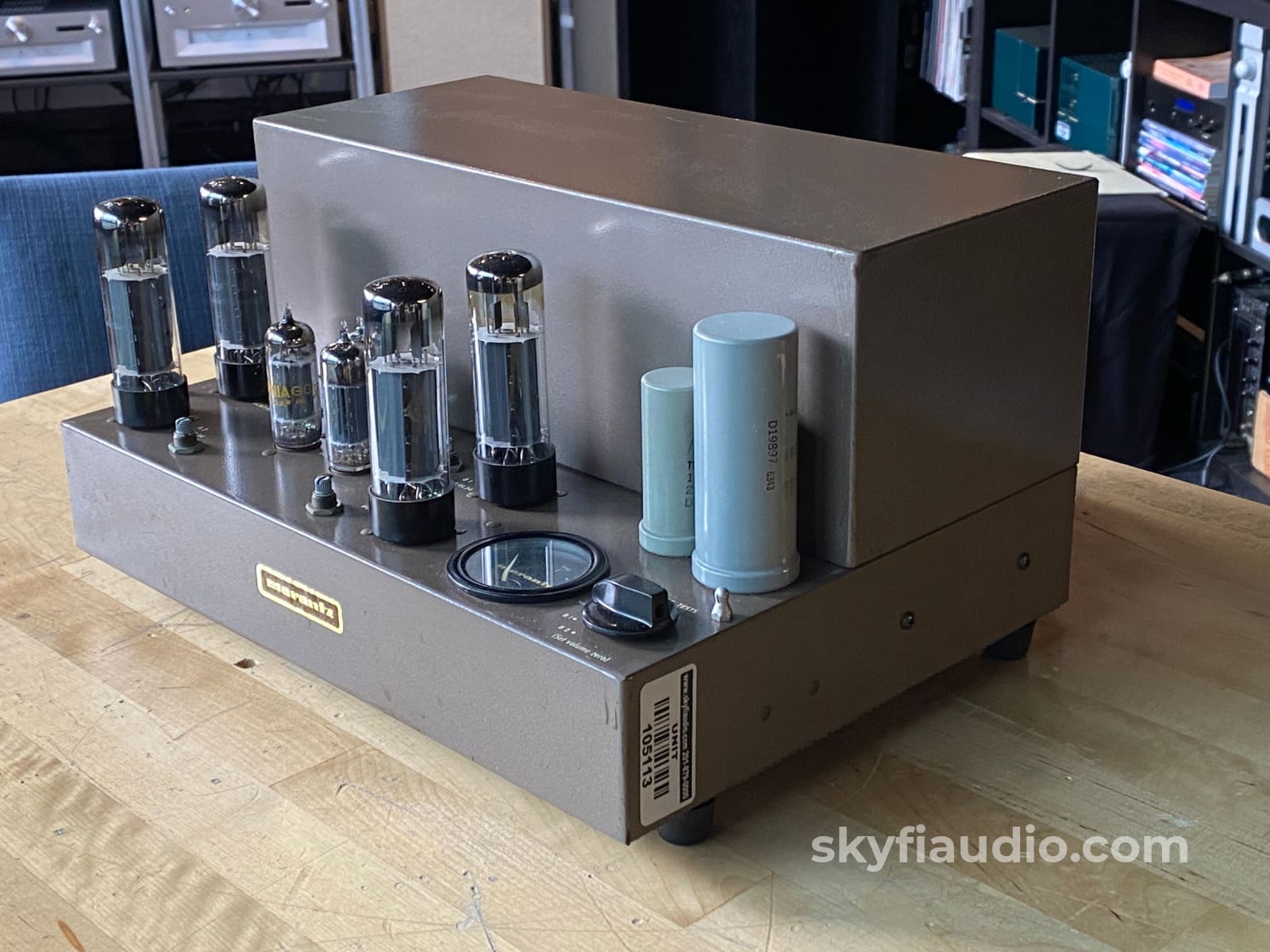
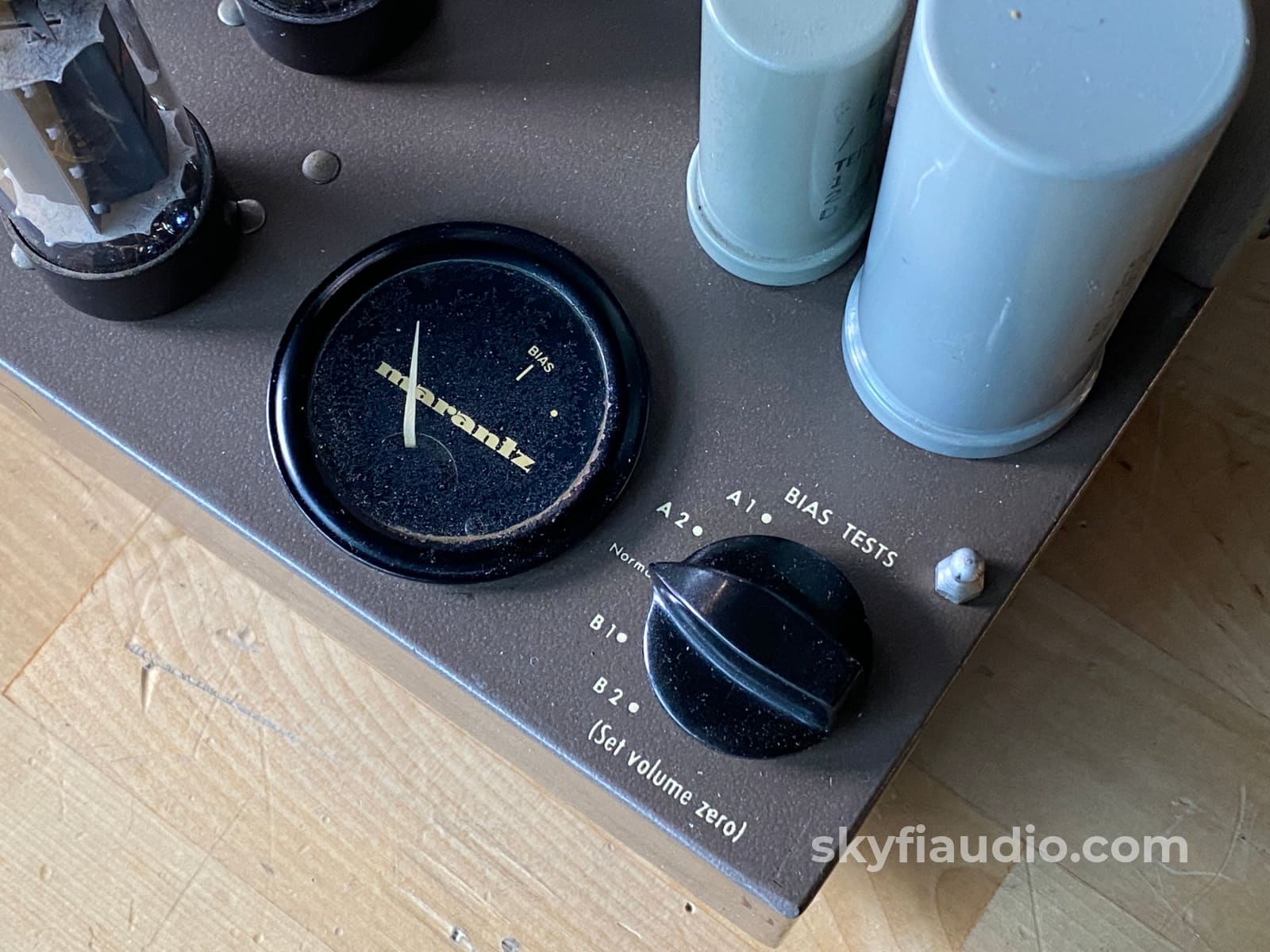
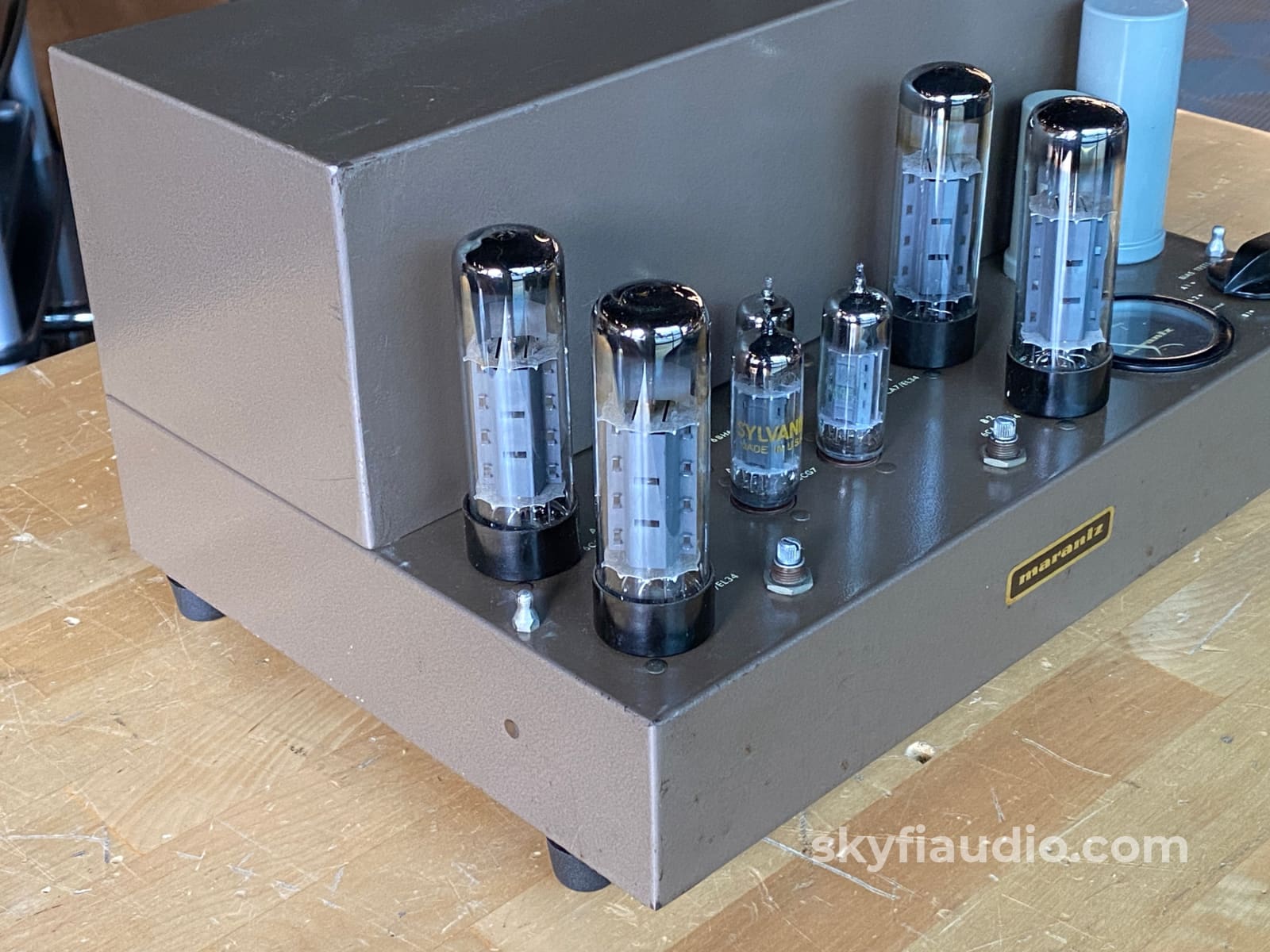
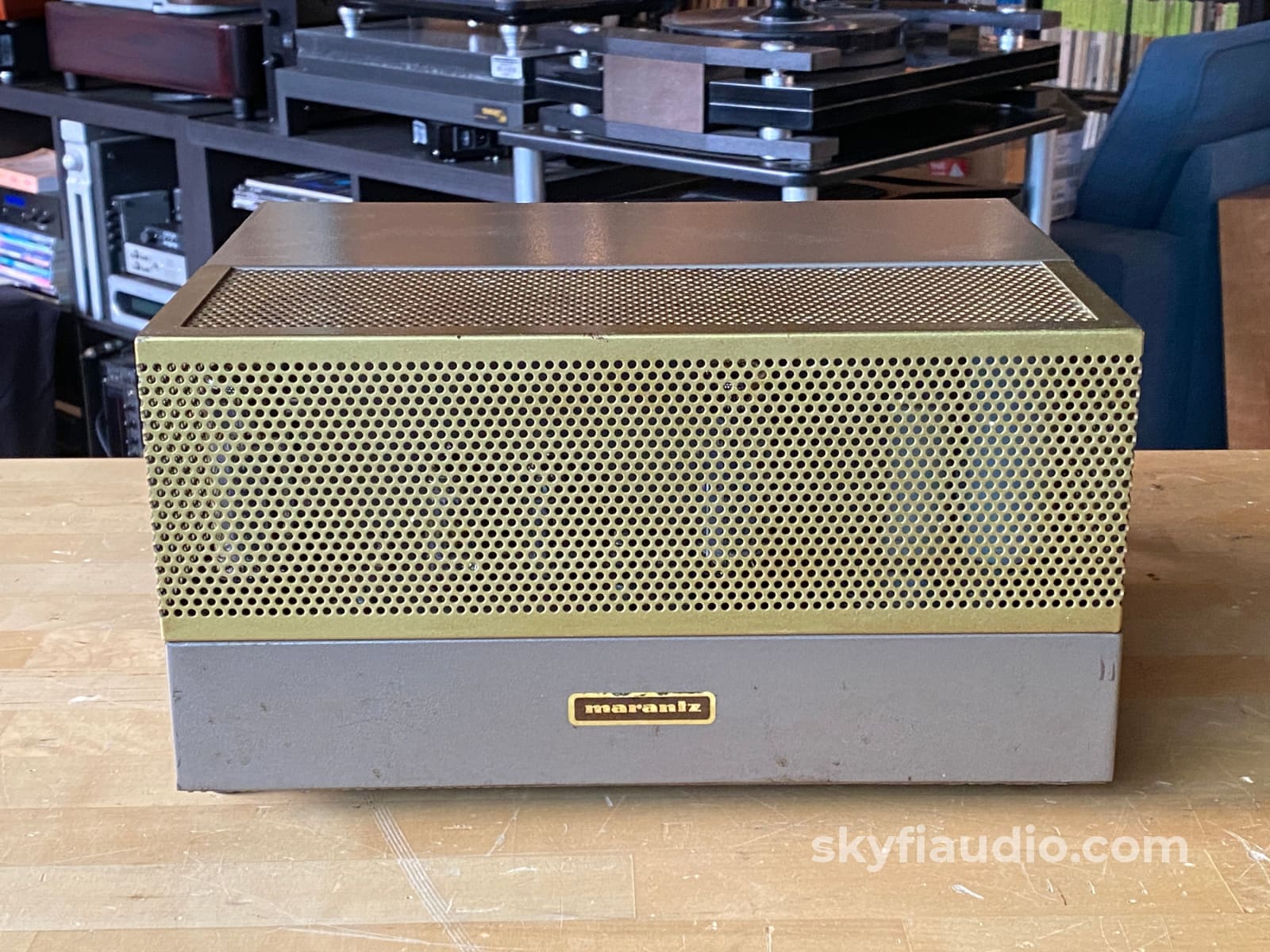
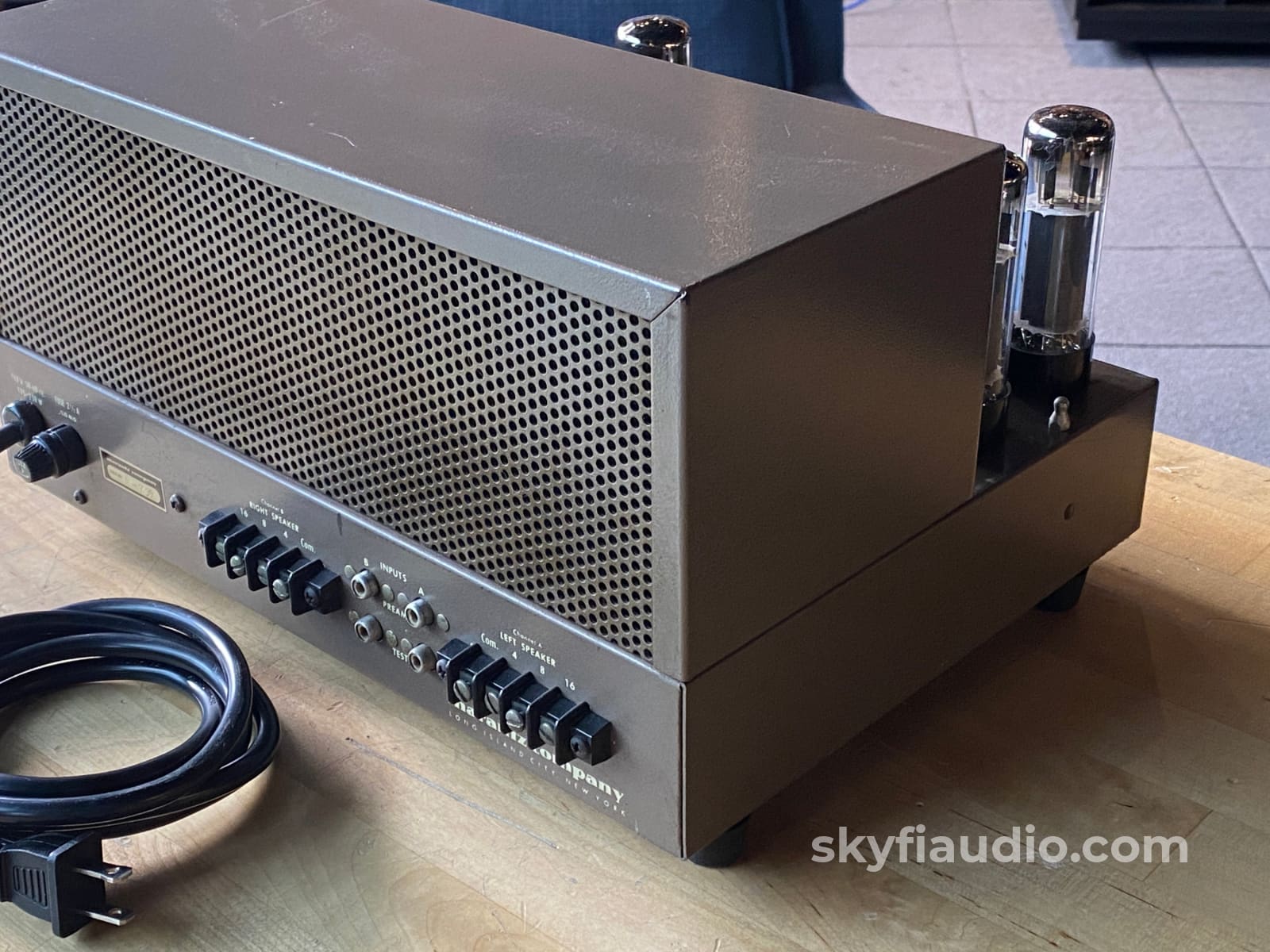

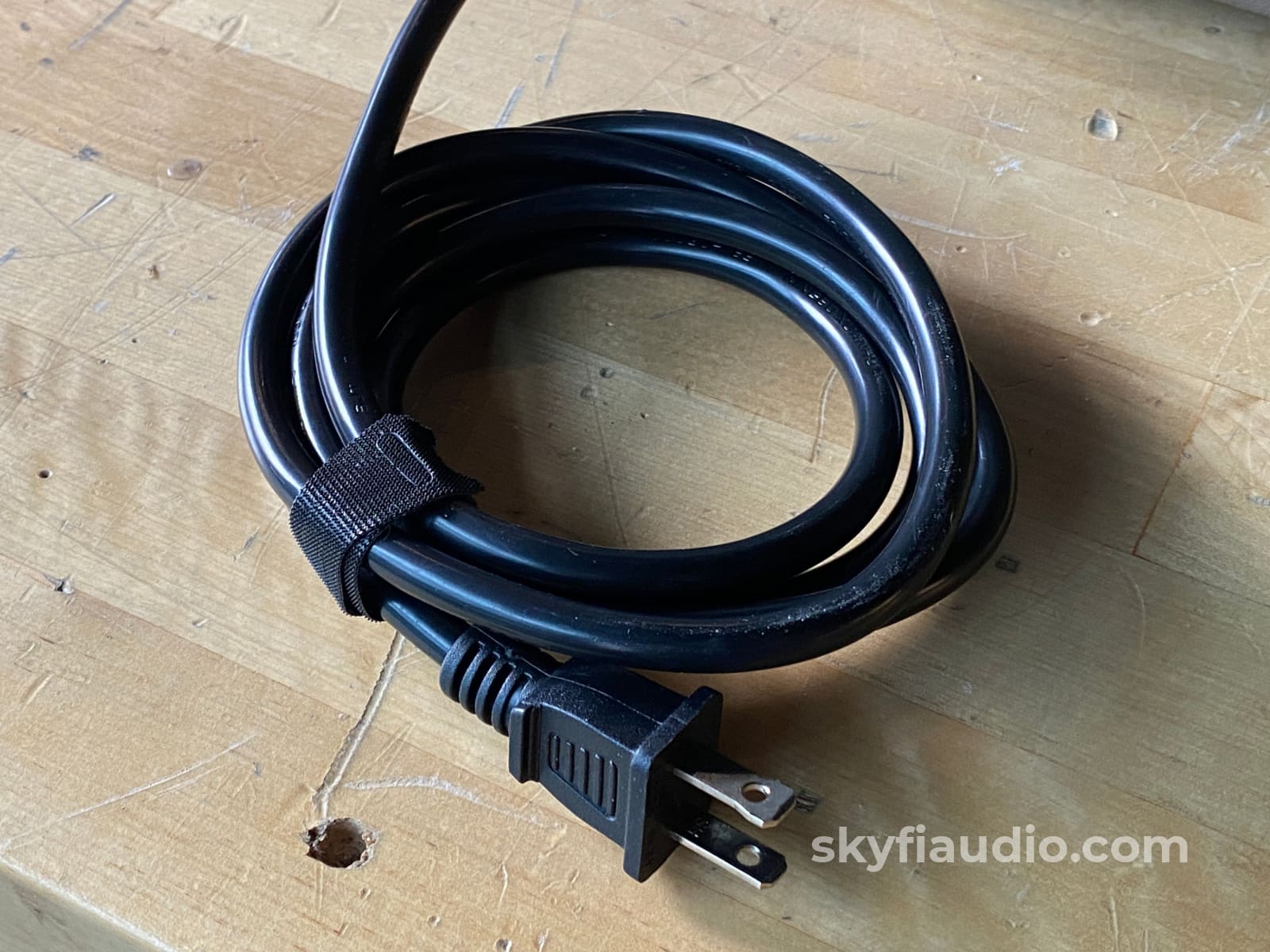
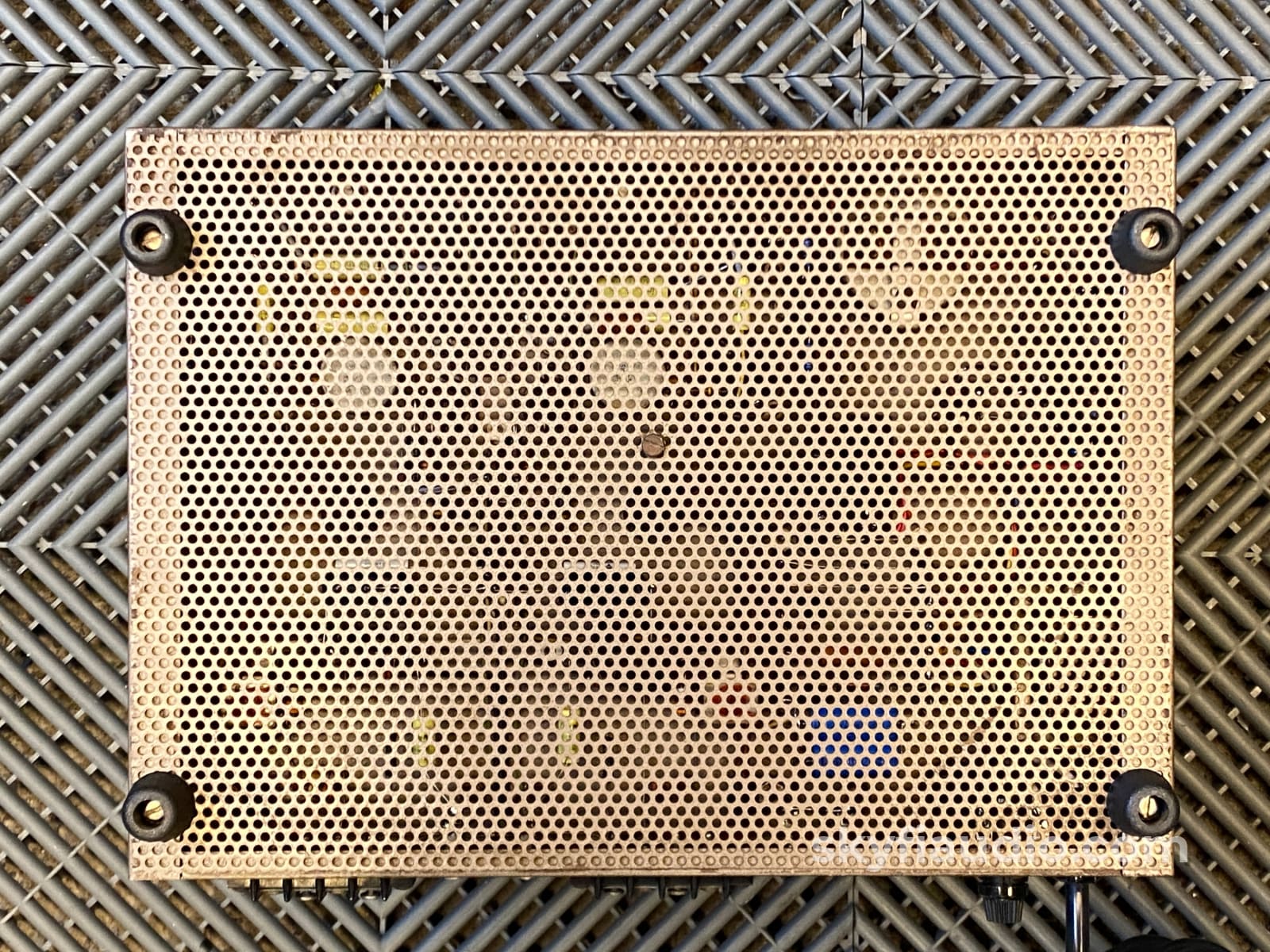
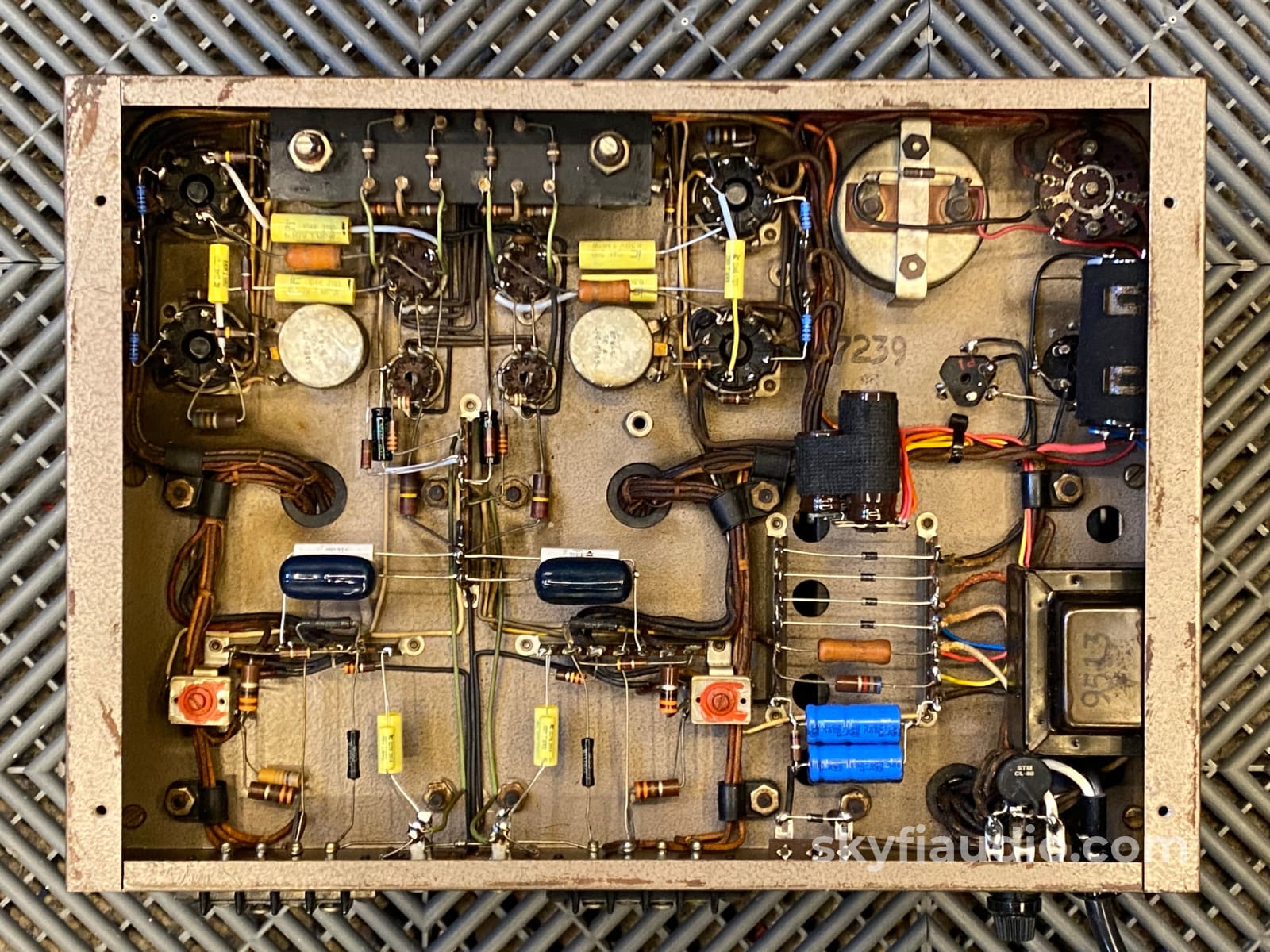
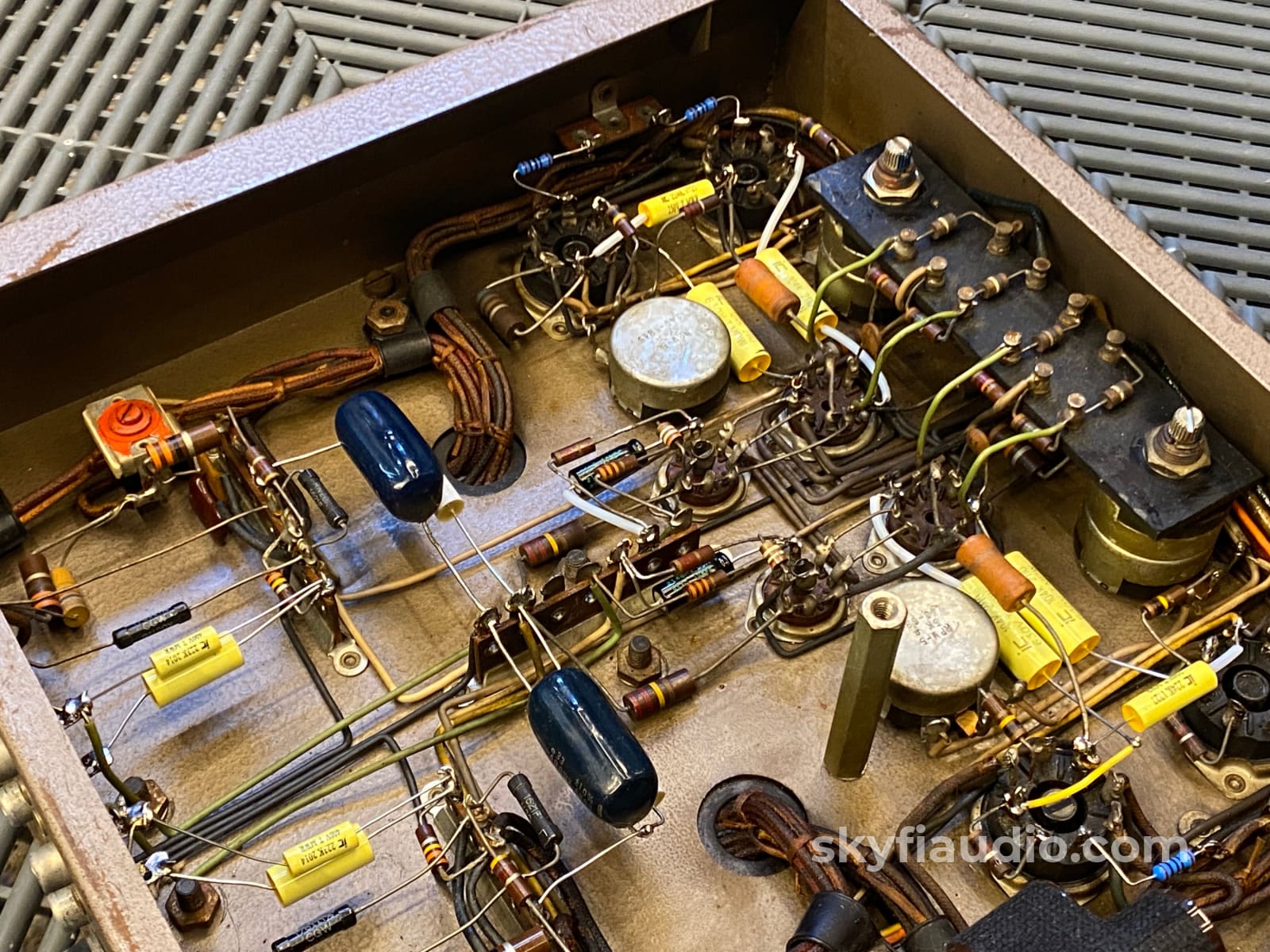
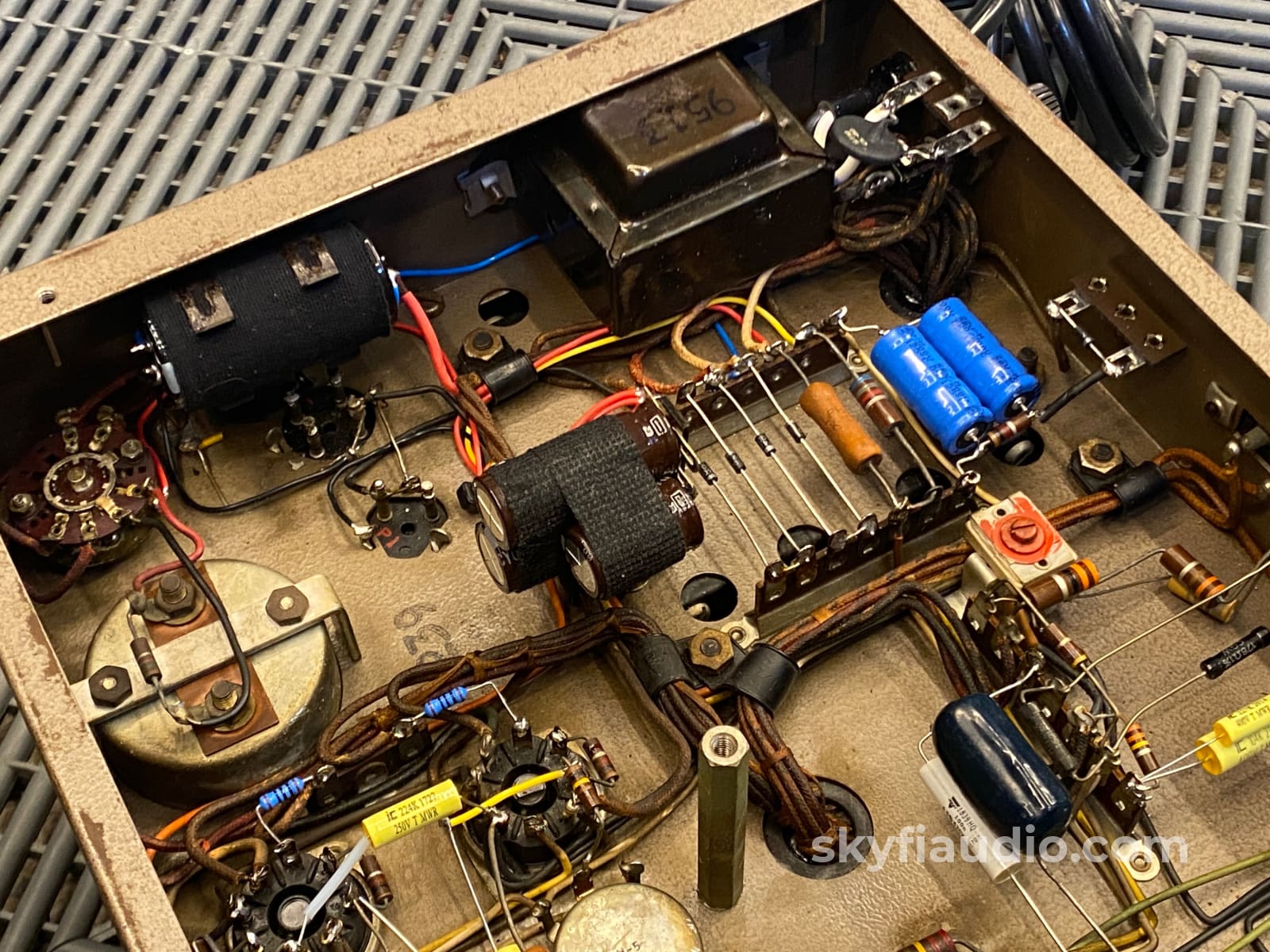
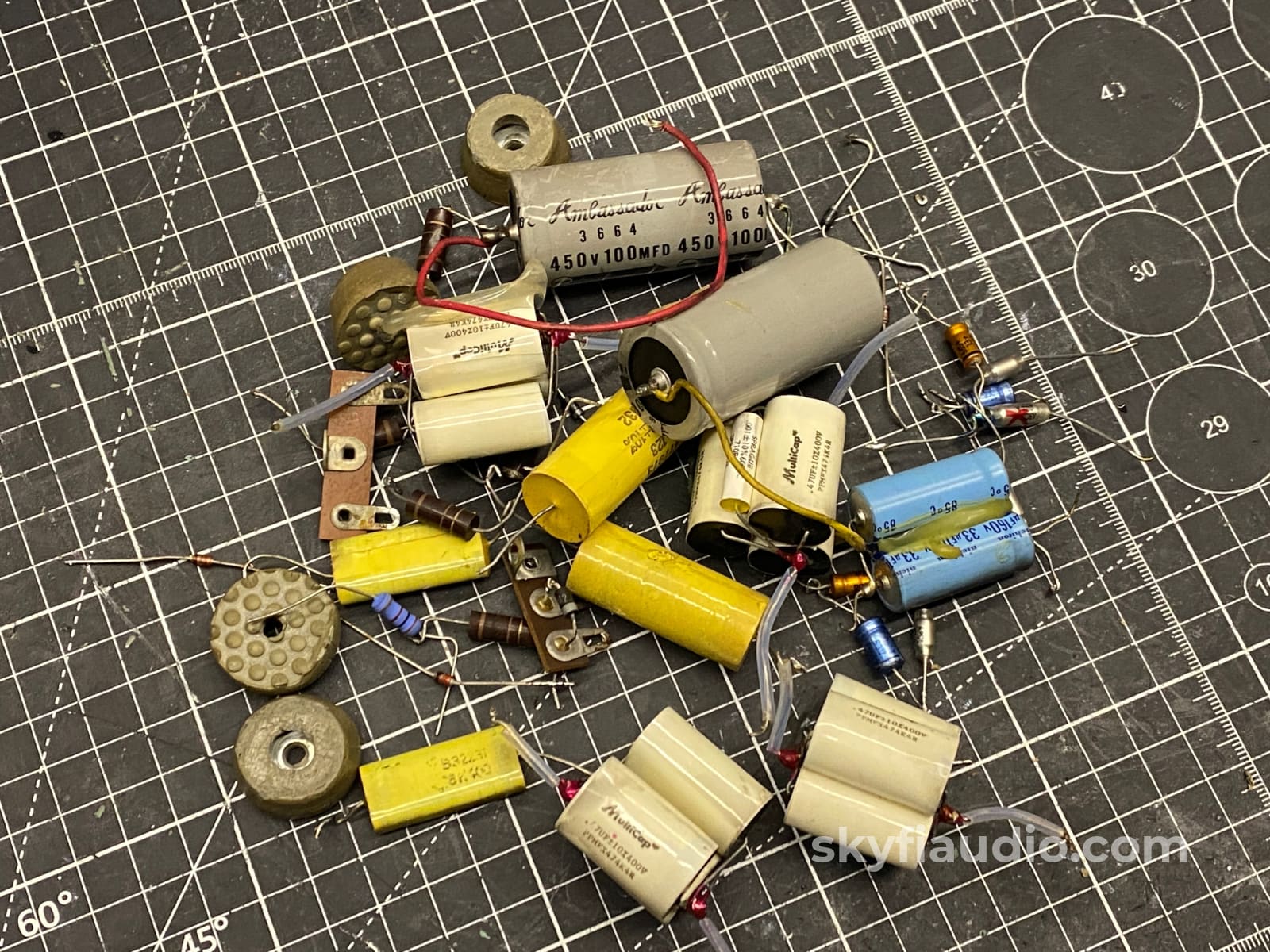
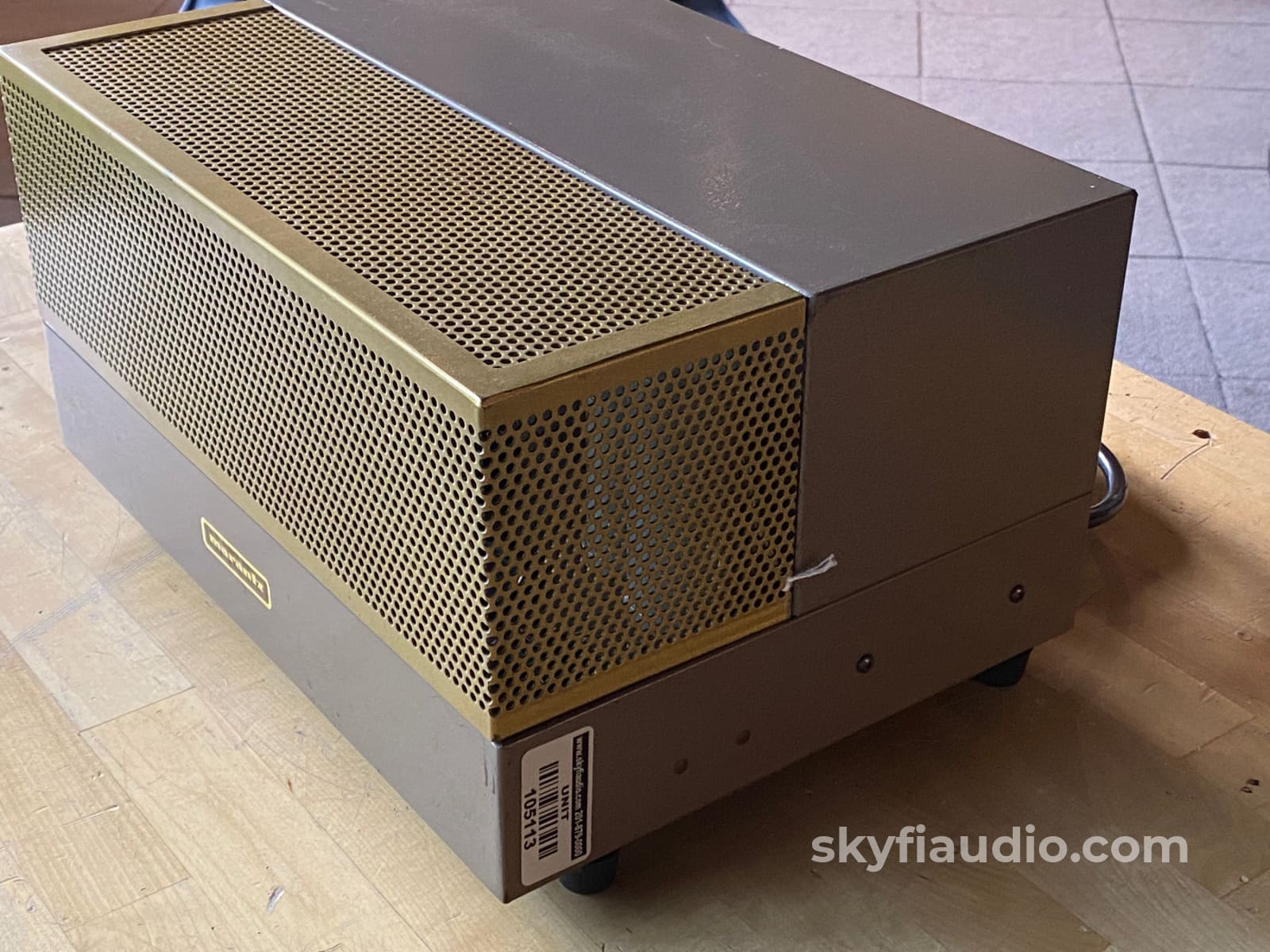
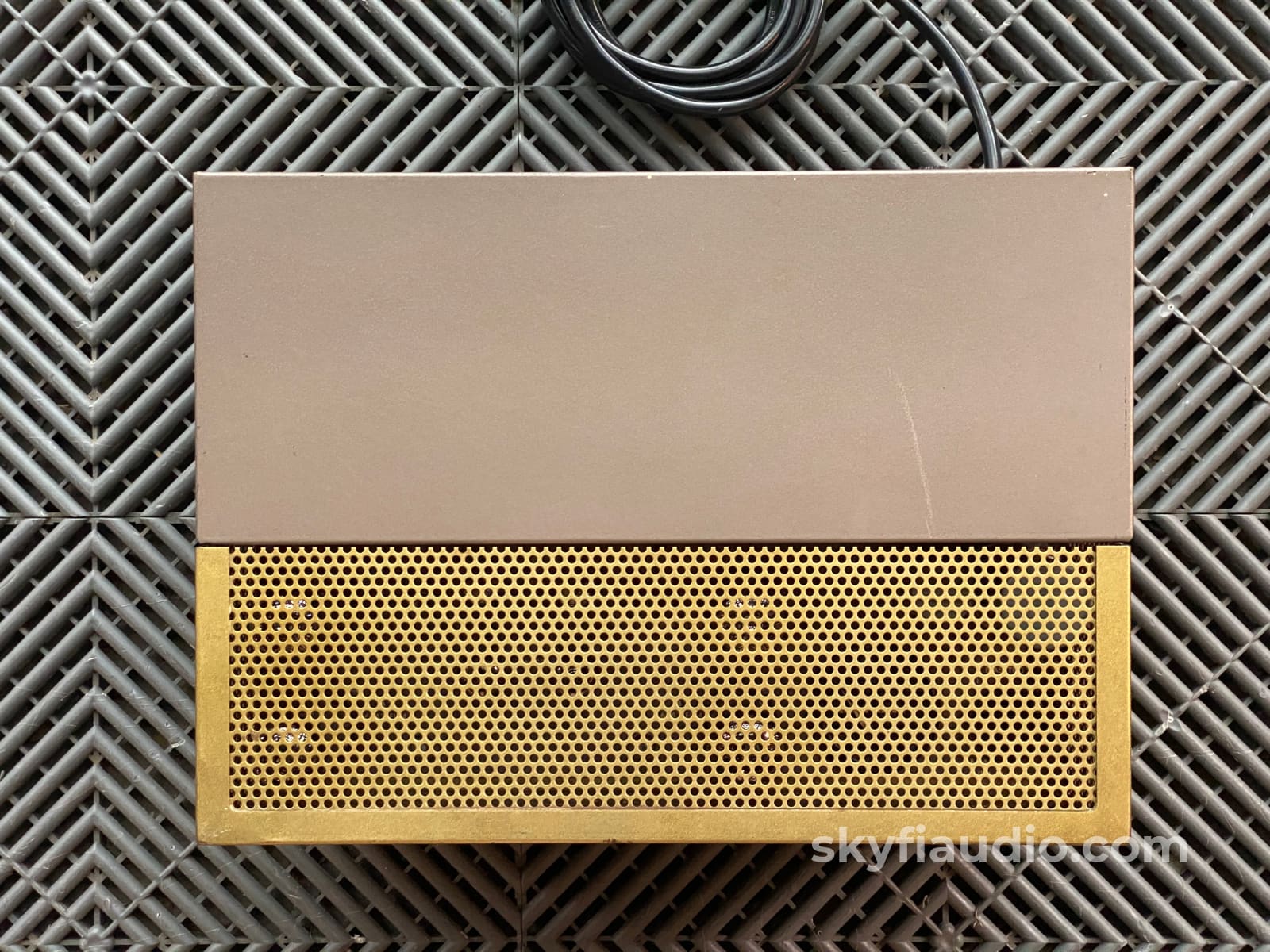

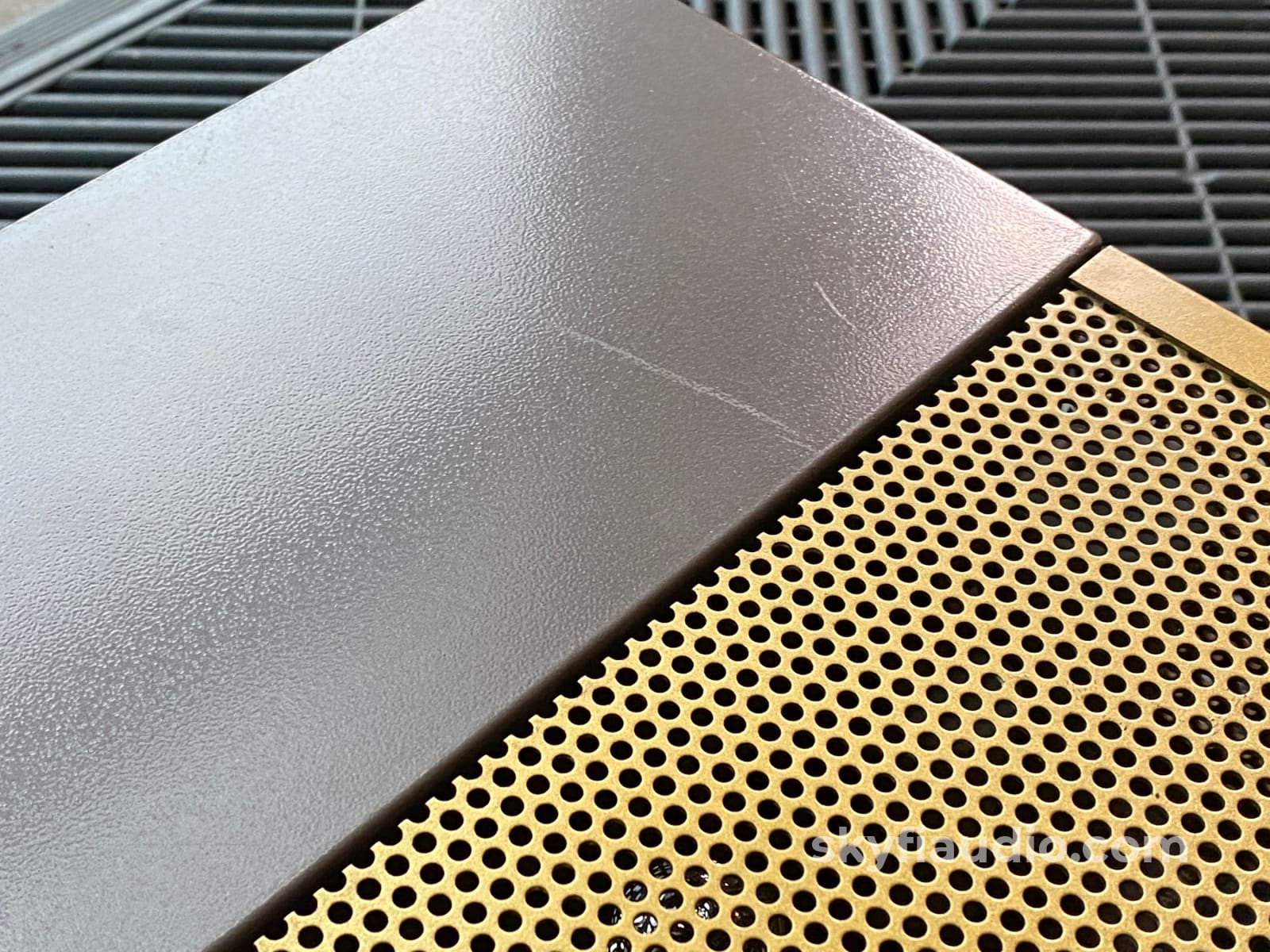
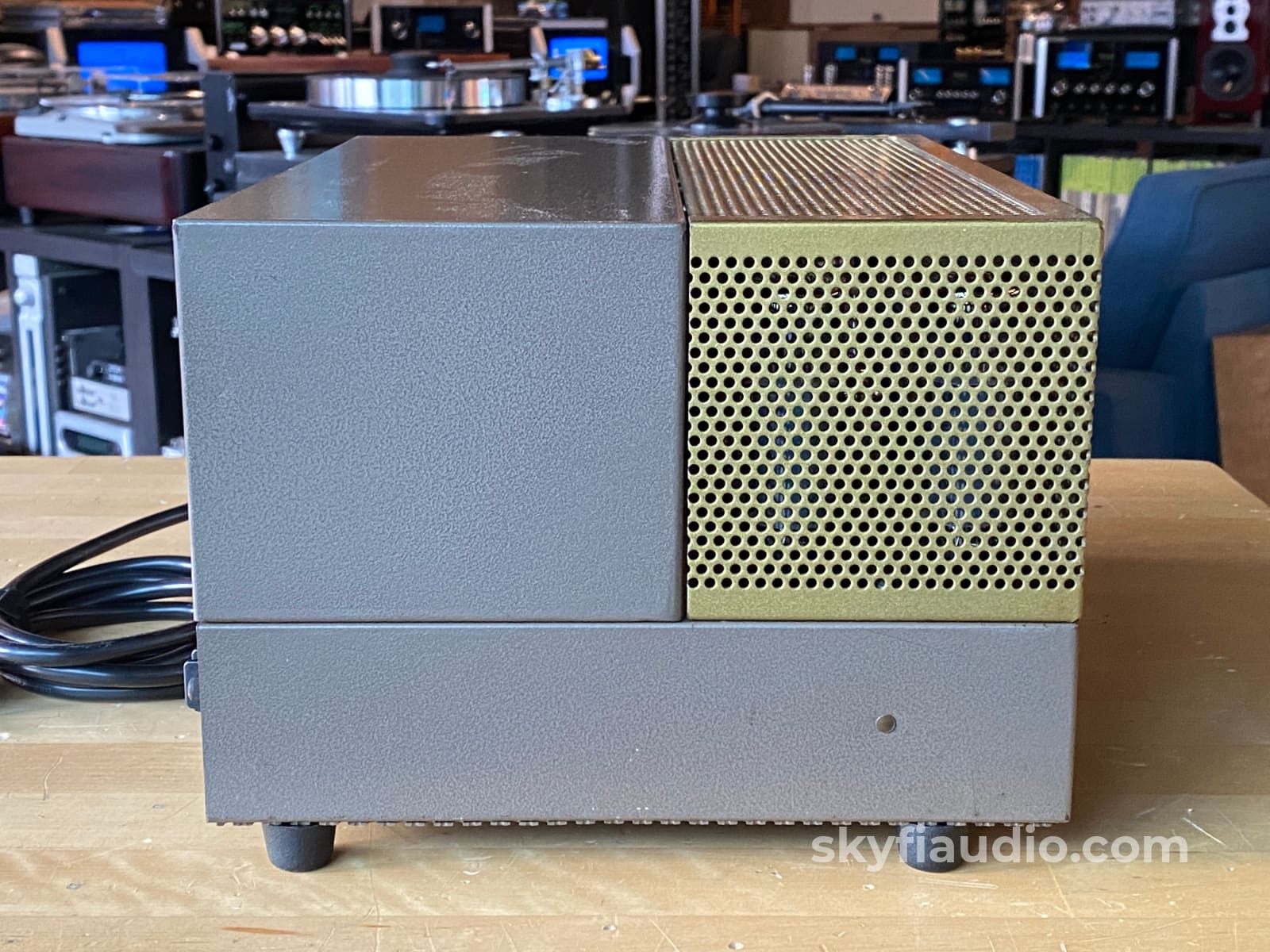
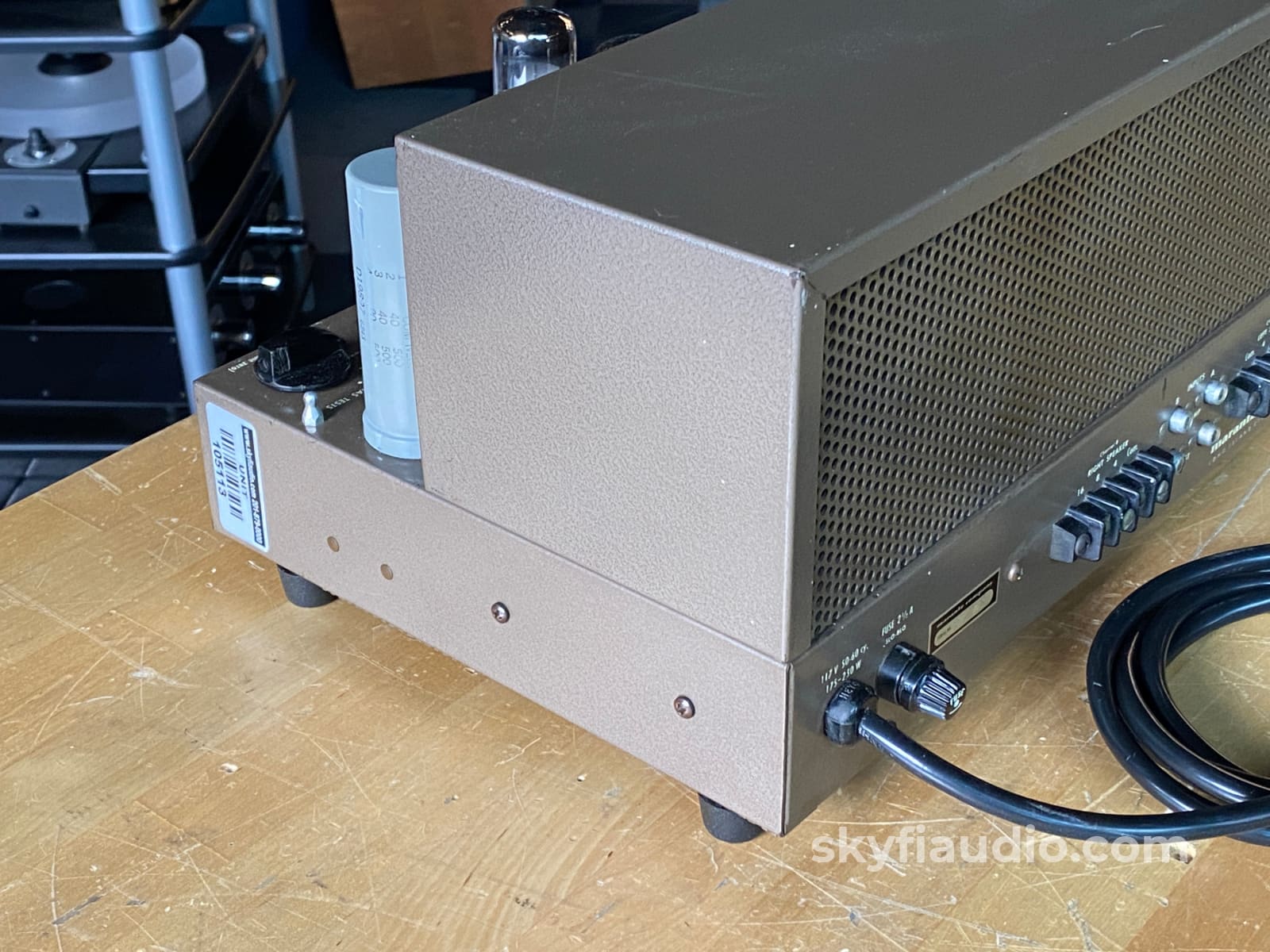
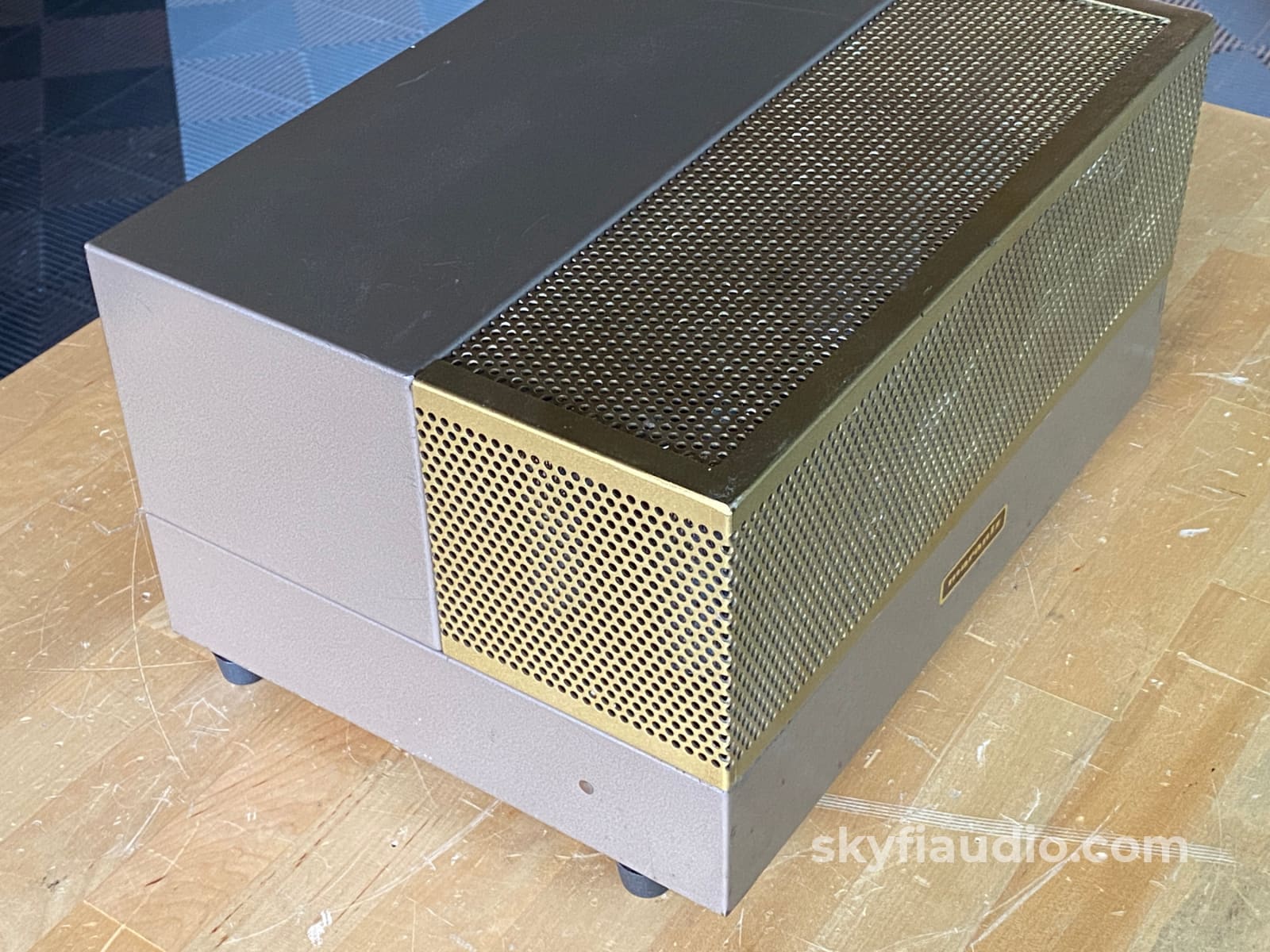
Marantz 8B Tube Amplifier - SkyFi Restored - With Tube Cage
Free Shipping on Most Electronics - Excludes Speakers and Items Requiring Freight - Contiguous U.S. Only
Pickup currently unavailable at SkyFi 479

Marantz 8B Tube Amplifier - SkyFi Restored - With Tube Cage
SkyFi 479
479 South Broad Street
Glen Rock NJ 07452
United States
General:
This is the venerable Marantz 8B, from the 60's (about mid-60's), and a fierce competitor to the McIntosh MC240 amplifier and vintage Harman Kardon Citation amplifiers.
While it's one of our best selling vintage tube amps we haven't had one available for over a year.
This particular Marantz 8B hailing from the late 1960's received a thorough restoration to get it back to spec without sacrificing sound quality (see our detailed restoration notes below).
The model 8B amplifier originally retailed for about $275 back in the 60's which is nearly $3k today. Since the collectability is super high on these they're quite expensive nowadays, and there are not that many left. A lot of these suffered chassis rust, and because they are heavy and hard to handle many were dropped and dented and dinged.
It's very well-built weighing in at about 56 pounds which is pretty amazing for a compact amplifier.
Tubes are a matched quad set of EL34 National branded Siemens which we've found to sound warm and detailed. Also included with your purchase is the original tube cage which is very rare as most were lost or damaged over time.
All of this results in a wonderful sounding amplifier that's perfect for powering your vintage or modern efficient speakers with a very capable 30 watts per channel.
Check out this video from our YouTube channel from a previous 8B that we had for sale for more information on this piece of history:
Lastly, we found this fantastic website that has over a dozen documents available for download related to this tuner. Manuals, Service Manuals, Vintage Reviews, you name it and it's there. Click here to check it out.
Click here to view all Vintage Marantz pieces currently available for purchase on SkyFi.
SkyFi Cosmetic Notes:
This amplifier has some cosmetic blemishes consistent with age including scuffs, scratches, and discoloration throughout. There is some wear to the RCA connectors and slight deformation of the bottom cover.
We also replaced the feet as the amp arrived here with a mismatched unoriginal set.
SkyFi Technical Notes:
We usually aim to keep these historic Marantz pieces as original as possible but this unit came into us in a non functional state, having been extensively modified in the past.
We removed all of the modifications and took the unit back to the stock Marantz schematic.
The restoration involved a full power supply rebuild, bias supply rebuild, signal path film capacitor replacement, resistors replaced as needed, all controls removed & cleaned, and fresh set of strong testing vintage tubes.
After the electronic restoration was completed we set the bias and AC balance to service manual specification.
Tube Notes:
All vacuum tubes are strong testing pre-owned vintage tubes.
6BH6 - GE
6CG7 - Sylvania
EL34 - Matched Quad National branded Siemens
Power Cord Notes:
The original power cord was showing signs of deterioration and needed to be replaced for safety. We replaced the cord with a new polarized cable. If having a large neutral blade on the plug will not work with your preamplifier, please contact us for options.
Ownership:
Unknown
Connections:
RCA inputs and screw terminals for outputs. Captive power cord.
General Sound:
Big beautiful musical sound with little fatigue.
Cosmetic Condition:
6/10 = Fair. Three to four minor scratches, or one major scratch. See our detailed rating description here.
Working Condition:
Working perfectly and tested in our lab and listening room.
Included:
Just the unit and power cord.
Packing:
Will be packed using our highly developed in-house process and custom packing materials.Reviews:
Click Here
Specs:
Power output: 30 watts per channel into 8Ω (stereo)
Frequency response: 20 Hz to 20 kHz
Total harmonic distortion: 0.1%
Damping factor: 20
Input sensitivity: 1.3V
Signal to noise ratio: 90 dB
Speaker load impedance: 4Ω to 16Ω
Valve complement: 2 x 6BH6, 2 x 6CG7, 4 x EL34
Dimensions:
13.5 x 7.25 x 10.5 inches
Weight:
55 lbs.
Approximate Age:
1965
Link to Manual:
Click Here
Recommended Cables:
Kimber Kable - RCA Interconnects - Better
Testing Process:
We start with a visual inspection of all internal components to make sure that there are no signs of heat stress or damage. Capacitors are checked for telltale signs of predictive failure including bulging, shrunken wrappers, or physical leakage. We also inspect resistors and other passive components for signs of overheating. If tube arcing has occurred in the past we can usually spot discoloration on the output tube sockets. On vintage units we often spot check select capacitors for value and ESR.
If the amplifier passes visual inspection, we move on to a full test of all of the tubes. We use a modern Amplitrex AT-1000 Professional Tube Tester which is capable of testing both emission and Gm with a high degree of accuracy.
We document the results of each tube and replace any weak or suspect tubes before proceeding.
When we power on tube amplifiers for the first time we usually use a variac and current limited AC supply and slowly raise the voltage up to nominal mains level while monitoring plate, screen, filament, and negative bias supply voltages where applicable.
If everything is in order we feed a low level test signal into the amplifier’s input and monitor its output on an oscilloscope across an 8 ohm dummy load. At this point we are just looking to verify basic function and confirm that the output transformers are not damaged.
Once we have verified that the amplifier is safe to operate, we connected it to full mains power. For fixed bias amps we set the bias to manufacturer spec. For cathode biased amps we monitor the plate to cathode voltage to determine if the output tubes are operating in a safe range. Once the output section is verified we move onto bench evaluation.
We start by feeding the input of the amplifier with a low level 1 KHz test signal, slowly increasing its amplitude while monitoring the amplifier’s output on an oscilloscope for signs of noise, clipping, distortion, or improper channel balance. We continue increasing the signal level until the amplifier reaches clipping. At this point we take an output power measurement and compare it to the spec sheet of the amplifier to verify proper performance.
We finish off the bench evaluation with a 1 KHz square wave check and a 20 Hz to 20 KHz sine sweep to assess the amplifier’s frequency response characteristics. This battery of tests will usually reveal if the amplifier has any issues that need further attention.
Before the device leaves the bench we perform a listening test with actual music using a variety of preferred test tracks. Our benches are outfitted with familiar monitor speakers which help us identify inconsistencies that will not always show up on our test gear. The main things that we are listening for are hum or noise with no signal present, proper center image, clicks, pops, or any other obvious undesirable audio characteristics.
If the unit passes all of these tests it is moved to our long term testing rig where we simulate real word operating conditions for 6-8 hours minimum.
For tube amps we like to run this test at least twice.
This allows us to monitor the unit for signs of thermal runaway or intermittent issues that only crop up when it has fully come up to temperature. We find this step to be essential, especially for vintage units.
Choose options




















